Women at Church: Magnifying LDS Women’s Local Impact
$21.95
- “Men need to read this book as much as the women.” — The Exponent
- “This book gives me a lot of reasons for hope.” — FairMormon
- “A fuller personification of the expansive LDS doctrine of women’s potential.” — Mormon Times
- “A monumental piece of work that comes at a time when it is sorely needed.” — This Week in Mormons
- “Read it yourself, then give a copy to your mom, your husband, your bishop, your Relief Society president, and your best girlfriends.” — Segullah


Available in ebook for Kindle, Apple, Nook, and Kobo.
Also available through Amazon and Deseret Book.
Download a free sample preview.
Book Description:
Women at Church is a practical and faithful guide to improving the way men and women work together at church. Looking at current administrative and cultural practices, the author explains why some women struggle with the gendered divisions of labor. She then examines ample real-life examples that are currently happening in local settings around the country that expand and reimagine gendered practices. Readers will understand how to evaluate possible pain points in current practices and propose solutions that continue to uphold all mandated church policies. Readers will be equipped with the tools they need to have respectful, empathetic and productive conversations about gendered practices in Church administration and culture.
All royalties from this book go to supporting the Mormon Women Project.
Also, please visit the companion website, womenatchurch.com, to share your own experiences and read about others who have found success in bettering the lives of Mormon women.
AuthorCast Interview with the Author:
Comprehensive Table of Contents:
.
Acknowledgements
Introduction
Who Is This Book For?
Offering a Guiding Hand
Part I: Identifying the Divide
1. Misbegotten Males
2. A Brief History of the Conversation about Women
3. Why Should I Be Concerned about How Women Feel at Church?
Disunity vs. Diversity
Addressing the Concerns
“If We Can’t Fix It, It Ain’t Broke”
4. Why Are Some Women in Pain?
Disconnect between Lived Experience and Church Experience
The Importance of Diverse Visual Representations in Modern Culture
Misuse of Councils and Church Structures
Rise of Single Sisters
Greater Awareness of History
Disconnect between Doctrine and Practice of Equality
5. Are We Practicing What We Preach?
Focusing on our Commonalities
Part II: Exploring Solutions
6. Getting Down to Work
7. Identify the Audience and Walk in their Shoes
8. Are We Asking the Right Questions?
Finding Flexibility in the Scaffolding
Offering a New Vision
9. Prayer
Prayer in the Real World: Baking a Sacrament Prayer
10. People
Finding the Right Approach
Opening the Line of Communication
Strengthening Ward Council Relationships
Women Working with Women: Claiming Influence
Women Working with Women:Celebrating Other Women
Honoring Women’s Leadership
People in the Real World: A Women’s Gender Forum
11. Process
Making Women More Visible in Our Sunday Meetings
Youth: Providing Equivalent Opportunities
Youth: Interviewing Young Women
Youth: Preparing Young Women for Church Service
Rhetoric: Empowering or Dismissing Women through Our Words
Rhetoric: Seeking Doctrine in Female Sources
Rhetoric: Honoring Names and Titles
Rhetoric: Men Speaking About and To Women
Process in the Real World: The Relief Society Missionary Service Coordinator
12. Perseverance
Handling Disappointment
13. We Are Not Alone
References Cited
Q&A with the Author:
.
Q: Two years ago you gave a presentation at the FairMormon conference on gender cooperation in the Church, both successes and failures. What motivated you to discuss the things you did with that audience, and what was the response to your presentation?
A: I wrestled for a long time with what to say in that presentation. My assignment was simply to talk about women, and since I was best known at that time for founding the Mormon Women Project, I think it was assumed that I would talk about my experience with the project or oral history work or something tame like that. I describe in Women at Church the moment that ultimately gave me the direction for the paper: it was the moment I realized we too often deny that faithful Mormon women have doubts and questions and real pain about gendered practices in the Church. The pain some women feel comes, I believe, from a disconnect between the glorious truths of our doctrine contrasted with the way our practices can sometimes set women on the sidelines. So, I decided to tackle that disconnect, which wasn’t exactly a tame thing to do but I felt that my professional experience in marketing gave me some of the tools I needed to look at cultural and sociological patterns with a trained eye.
I was so nervous to give the talk! I figured I had nothing to lose, but I knew I would be saying some hard things to an audience who I wasn’t sure would take them in the spirit in which they were meant. And some people didn’t get the spirit I intended; questions from the audience at the end of my talk asked how dare I criticize the Church, etc. Later, commentators tore apart every argument I made, questioned my sources, questioned my motives. But in general, the response was overwhelmingly positive in the sense that 50,000 people have read the talk, and I think it opened a door to fresh conversation. It was heartbreaking too in that people started writing to me about why the talk meant so much to them, and most of the emails were written from a place of pain.
Q: A lot has happened since then to increase the visibility of women and women's issues in the Church, from the age change for sister missionaries to Ordain Women. Why this book, and why now?
A: It’s hard to imagine now, just a short two years later, how new the ideas in the FairMormon talk were to many people. Two years ago, those of us engaged in the women’s conversations were still just trying to get much of the main church membership to consider the issue seriously. Hence “The Pain is Real” section of the talk. But the October 2012 announcement that girls could go on missions at 19 instead of 21 threw urgent focus on how well we are preparing our girls and women to be leaders in the global church and what we could be doing better. It was truly one of the best things that could have happened to draw institutional focus on how the female church experience is different from men’s.
There’s no doubt in my mind that Ordain Women’s presence has also underscored for the mainstream church membership the need for discussion about women’s church experiences. Although taking a very particular approach, Ordain Women at its best moments was concerned about establishing parity in the experiences men and women have at church, in the way men and women feel valued and used, and in the practical contributions they each make to keep the community running. Even though I appreciated their drawing more attention to the conversations about women in the Church, I continued to feel that aligning our practices better with our existing doctrine was the most pressing need.
And so the book. My gratitude goes to Kofford Books for planting the idea of a book in my mind and giving me the confidence to pursue it. I was still unsure about doing it until I went to a work conference in New York last December. The conference was put on by Q Ideas, sort of a TED Talks for the Christian evangelical community, and the theme of this conference was gospel-focused entrepreneurship. Even though I was sent to the conference with an eye for professional projects, I felt a growing conviction while I was there that I needed to use some of the principles I was learning from the presenters to write the book. I wrote the book’s whole outline on the plane on the way home, and I started writing directly after Christmas.
Thanks to my supportive husband, I wrote the book on Saturdays when he was skiing with my kids, and on weeknights from 9-11pm. I submitted the book in June, two weeks before Kate Kelly was informed of her disciplinary council. I feel sure there was a divine hand in the timing of this publication. I hope that it is the Lord’s way of saying, “Look, there’s another way, another conversation to be had.” I hope it can fill a hole that exists in some people’s hearts after this summer’s excommunication, or open the hearts of those who thought conversations about women at church were shut down.
Q: Although you present a number of feminist ideas, achievements, and even examples of feminist activism in a positive light in the book, you never actually use the words 'feminist' or 'feminism.' Why is that?
A: The short answer is that I wanted to show that there is another way to talk about women’s experiences at church without resorting to labels that bring with them preconceived biases. As much as I respect the self-named Mormon Feminist community, understanding the Church’s history on women’s issues in the 20th century and the cultural perceptions of the mainstream member suggested to me that the only way to gain broad-based interest in and loyalty to the concepts was to not use the feminist label at all.
One of the reasons the “feminist” label can be problematic is because it really has two meanings. On the one hand, it simply identifies the belief that women should be able to magnify their potentials by developing their talents and contributing to their communities in recognizable, appreciated and safe ways. When members of the Church say they are feminists because they are Mormon or that all Mormons are feminists, this is typically the definition that accurately supports their claim. I agree that it would be an ultimate hypocrisy for someone who expresses faith in Heavenly Parents and the individual worth of souls not to claim this definition.
But on the other hand, the “ist” on the end of the word suggests that being “a feminist” is something one awakens to through a process of recognizing unjustness and ugliness in the world, necessitating a separation and even a perceived elevation from those who have not themselves identified ugliness in practices or behaviors. In this sense, “feminist” is an action word: it brings to mind someone who is actively protesting against what others may consider to be normative, and so it can seem threatening to those who haven’t had a similar awakening. It can be perceived to be a distancing word, a designation of a fighter, a title for someone who sets herself apart because she knows better. In addition, the “ist” brings to mind other descriptors like “racist” and “sexist” and “misogynist” and other words that describe behavior that is contrary to desired behavior. The word fails to inspire the idea that magnifying women’s potential is the norm, not the exception, and it is instead rhetorically categorized with words that condemn non-normative behavior.
Q: In the book you argue that there's a lot we can do, particularly at the local level, to improve and increase gender cooperation and women's participation without pushing for major or radical changes from central Church leaders. Indeed, you suggest that these improvements will help us to better live up to what we already have. On what basis do you argue that existing Church policies demand greater effort at gender cooperation from us?
A: One of the great delights in writing this book was the periodic feeling that institutional Church advancements needed to slow down or else my book was going to be dreadfully out of date when it came out! The addition of the female general officers’ portraits in the Conference Center and in the Ensign centerfold, the creation of the sister training leader position, Elder Oaks’ talk on priesthood at general conference all confirmed for me one of my central theses: that in some ways, general church leadership is more advanced than local congregations in seeing, hearing and including women, and that we can do a better job of taking our lead from them. How many stake offices have added the pictures of the Stake Relief Society presidency? How many female stake officers sit on the stand during stake conferences, following the practice of having female general officers on the stand for every session of general conference? Not many. I also delighted in studying Elder Ballard’s book, Counseling with our Councils, which explicitly shares stories of women being improperly used at local levels, and pleads with members to use women more wisely. There is obviously a long way to go to, both on the local and general levels, but I see encouraging efforts.
But here’s the real evidence: If our leaders wanted us to practice a true separation of men and women, and not true cooperation between the genders, they could make us do it. They didn’t have to make it easier for girls to serve missions. They don’t have to encourage girls to get all the education they can. They don’t have to instruct husbands and wives to make choices that are right for them and their circumstances. The Proclamation on the Family could be way more cut and dry than it is. We could still be reading articles in the Ensign about the patriarchal order of the home. But we’re not. We are in the process of taking the best that the world has to offer women and, I believe, enhancing it with overlaid truths about what it means to be uniquely female and uniquely male. And I don’t believe our leaders want us waiting around to have every little policy outlined in the Handbook. We’re agents unto ourselves. We’re a do-it-yourself church; if we members don’t do it, it likely doesn’t get done.
Q: What is a specific example of something that can be improved in our wards and stakes to increase women's participation that does not require doctrinal or major procedural changes from Salt Lake?
A: Well, there are lots and lots of examples in the book! And I hope people share their own examples at the book’s website, womenatchurch.com, or by using the hashtag #womenatchurch. The idea of the site is to create a crowdsourced repository of ideas that can be shared across local congregations.
But to whet your appetite before you read the book. . . . One of my favorite ideas addresses the need for Young Women to be better prepared to teach the gospel and be leaders before they serve missions. I learned about a number of stakes that have implemented programs whereby the Young Women serve as visiting teachers with Relief Society sisters. In some stakes, the Young Women visit teach with their mothers; in others, the girls are assigned adult companions just the way the boys are assigned adult companions. The ideas of how to better incorporate girls into the Relief Society program and into leadership roles start to flow when we look at how the Young Women and Young Men organizations might be structured with more parity in the experiences, opportunities and budgets of each group. I could go on and on . . .
Q: Who, then, is the target audience for the book---women, or local male Church leaders?
A: The book is about a community—our community—and the way we interact with each other. It’s a call to change some cultural practices that don’t live up to our doctrine. And the way to change culture is to create new culture. The culture of a ward or stake is the result of all of the people in that area working together, not just men and not just leaders. This is not just about how men treat women; I have a lengthy and impassioned section in the book about how women treat women and how women treat men. So the answer is that, no matter what someone’s current calling is at church and regardless of gender, this book is for everyone.
Q: What is the Mormon Women Project, and how has your work there influenced the writing of this book?
A: The Mormon Women Project is a continuously expanding digital library of interviews with LDS women from around the world. We’re a non-profit 501(c)3 and the interviews are all accessible to the general public at www.mormonwomen.com. I launched the MWP in January 2010 with 18 interviews of my own, and now we’ve published almost 300 interviews from 22 countries. All of the proceeds from this book go to supporting the Mormon Women Project.
I didn’t set out to be an oral historian; I wanted to create motivational profiles of women I admired and who I thought might help other Mormon women craft their own identities as mothers, daughters, professionals, students, humanitarian workers, survivors, whatever. But in the process I’ve gained unprecedented access into the lives of hundreds of our women. It is a tremendous blessing in my life to do these interviews, and each is a privilege and a faith-promoting call to me personally to endure to the end. More than the insights I’ve gained into Mormon women, I’ve gained a tremendous love for them. The gospel produces absolutely remarkable women.
Praise for Women at Church:
“Such a timely, faithful, and practical book! I suggest ordering this book in bulk to give to your bishopric, stake presidency, and all your local leadership to start a conversation on changing Church culture for women by letting our doctrine suggest creative local adaptations—Neylan McBaine shows the way!” — Valerie Hudson Cassler, author of Women in Eternity, Women of Zion
“A pivotal work replete with wisdom and insight. Neylan McBaine deftly outlines a workable programme for facilitating movement in the direction of the ‘privileges and powers’ promised the nascent Female Relief Society of Nauvoo.” — Fiona Givens, co-author of The God Who Weeps: How Mormonism Makes Sense of Life
“With her keen insights, Neylan McBaine has emerged as a leading voice in a necessary conversation. Women at Church brings attention to gender issues while offering innovative solutions. A truly remarkable resource that belongs in every Latter-day Saint home!” — Juliann Reynolds, co-founder and member of the Board of Directors of FairMormon
“Neylan McBaine’s voice is uniquely important. She speaks as a unifier, knowledgeable of gender issues and attentive to all perspectives. I particularly like her questions—some paradoxical (“How do we respect the traditions, practices, and truths of our earliest progenitors, while holding sacred the rebel explosion of the Restoration?); some rhetorical (“How can we dismiss others’ pain simply because we do not feel it ourselves?”); some inviting introspection in all of our conversations about gender (“Who will feel closer to God if my ideas are implemented?”). Women at Church invites respect of all for all, and particularly for any woman who identifies herself as a member of the ‘armies of SHElaman’ , standing as a witness for Christ in any circumstance and transcending argument with love.” — Margaret Blair Young, co-author of Standing on the Promises
“Considered, sensitive, important. Neylan's exceptional ability as a writer has provided us with an in-depth look at issues which will surely open positive avenues for dialogue.” — Beverly Campbell, author of Eve and the Choice Made in Eden
“In her timely and brilliant findings, Neylan McBaine issues a gracious invitation to rethink our assumptions about women’s public Church service. Well researched, authentic, and respectful of the current Church administrative structure, McBaine shares exciting and practical ideas that address diverse needs and involve all members in the meaningful work of the Church.” — Camille Fronk Olson, author of Women of the Old Testament and Women of the New Testament
“Smart, aware and concerned, Neylan McBaine provides thought-provoking stories and ideas about giving more prominence to LDS women’s voices. We hope this book will also prompt LDS couples to discuss their Priesthood partnerships.” — Linda and Richard Eyre, authors of The Turning: Why the State of the Family Matters and What the World Can Do about It
“Neylan compellingly describes how LDS women do find, and might expand, their personal, spiritual, and organizational empowerment in the LDS Church as it functions in local wards and stakes—where women serve as leaders who supervise and preach, teach, and minister to fellow church members.” — Maxine Hanks, editor of Women and Authority: Re-emerging Mormon Feminism
“In Women at Church, Neylan McBaine artfully addresses the perception of Mormon feminism from the perspective of an orthodox believer; weaving their stories in with those who have traditionally been maligned for identifying concerns surrounding the position of women in the LDS Church. Rather than pose church members as opposing factions, Neylan draws us closer together in a narrative that highlights our potentially common goals. The book is accessible and offers a way forward for faithful seekers to highlight the contributions of women in the Church and empower all people in the spirit of equity in the Gospel of Christ.” — Lindsay Hansen Park, founder of the Feminist Mormon Housewives Podcast
“Neylan McBaine has a wonderful mind! What I love about it is her ability to focus on the important, essential questions, without getting distracted by instant solutions. Good questions are the only way to finding good answers.” — Clayton M. Christensen, author of The Power of Everyday Missionaries
“Her approach is one of consensus building, while taking into account the very real differences that occur among members. She is hopeful, and calls for ways of staying within the church in order to improve it for everybody. I like her approach. I find her hope infectious. . . . Upon finishing, I handed this book to my husband. If we are going to talk about gender issues at church, men need to read this book as much as the women who might be confused or suffering. I hope many local leaders take the time to listen, whether to McBaine or to the men and women who might approach them with concerns and suggestions.” — Emily January Petersen, The Exponent
“This book gives me a lot of reasons for hope.” — S. Hales Swift, FairMormon
“I thank God for people like Neylan, speaking from a place of faithfulness and rootedness in the Mormon tradition.” — Jana Reiss, Flunking Sainthood
“Women at Church engenders true empathy and inspires faithful action—a potent combination for those who wish to enrich the experiences of LDS women at church.” — Blair Hodges, By Common Consent
“Those looking for a book of principles for addressing gender concerns . . . may find much in Women at Church to help LDS women have broader impact, less frustration and a fuller personification of the expansive LDS doctrine of women’s potential.” — Wendy Ulrich, Mormon Times
“This is a monumental piece of work that comes at a time when it is sorely needed. . . . . Neylan McBaine makes an excellent case for healing and pushing forward as a unified front in Women at Church.” — Geoff Openshaw, This Week in Mormons
“I wholeheartedly recommend Women at Church. Read it yourself, then give a copy to your mom, your husband, your bishop, your Relief Society president, and your best girlfriends.” — Shelah, Segullah
"I greatly enjoyed this book . . . There is work to be done in Zion, the good work of loving The Lord and loving each other." — Emmett O. Rabs, Approaching Justice
"What Neylan does, and does at a much-needed time, is allow the discussion of the roles and experiences of women and the church to be presented in a non-threatening manner." - Brandt Malone, The Cultural Hall Podcast
Podcasts and Interviews:
Video of book release panel discussion
Video of the Daughters of the Utah Pioneers panel discussion
Cultural Hall Podcast
FAIRMormon Podcast
Young Mormon Feminist Podcast
This Week in Mormons Podcast
About the Author:
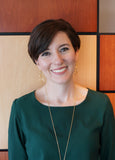
Neylan McBaine, a life-long Mormon, grew up in New York City and later attended Yale University. She currently lives with her husband and three young daughters and works as a brand strategist for an advertising agency in Salt Lake City. Widely published as a religion writer, Neylan founded the Mormon Women Project, a digital library of interviews with LDS women from around the world, in an effort to emphasize the many ways that modern faithful women choose the right. The site, which posts about one interview a week with the help of dozens of volunteers, includes over 250 interviews with LDS women from 22 countries.
More Information:
211 Pages
ISBN 978-1-58958-688-8
Published August 2014

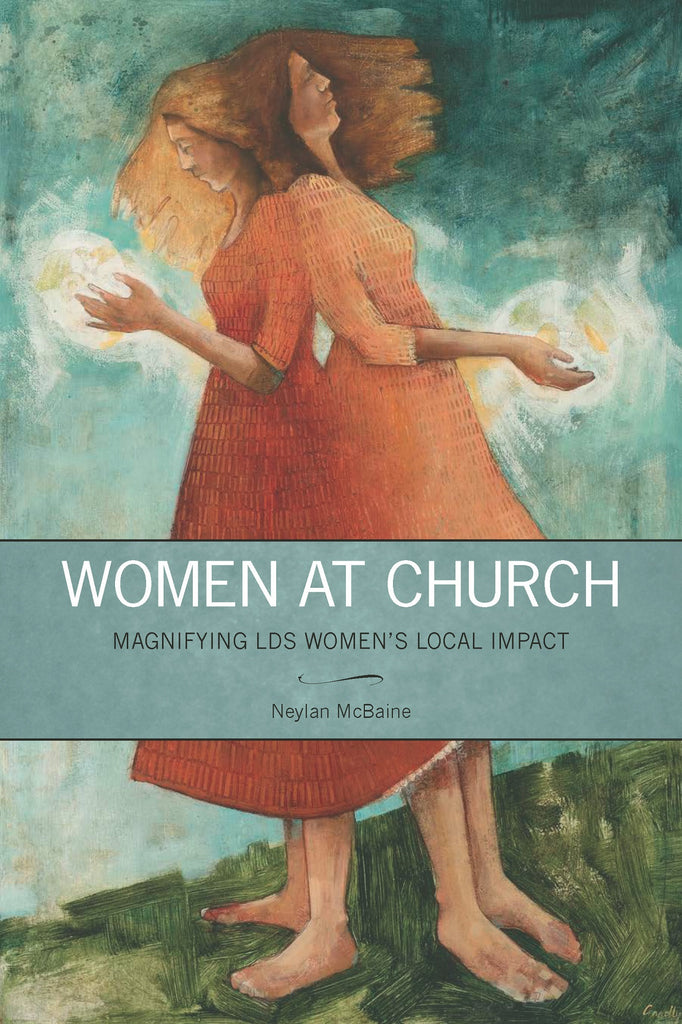
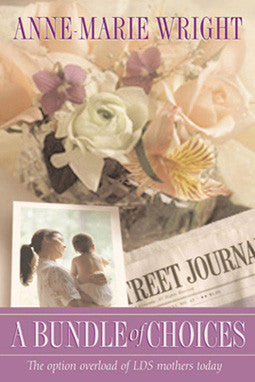
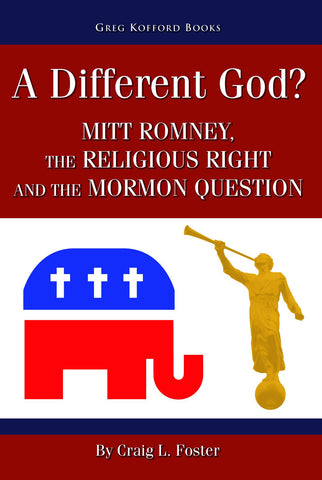

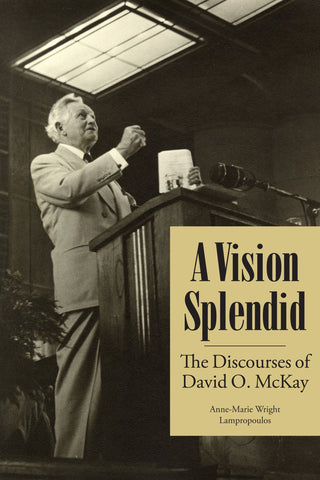
Share this item: